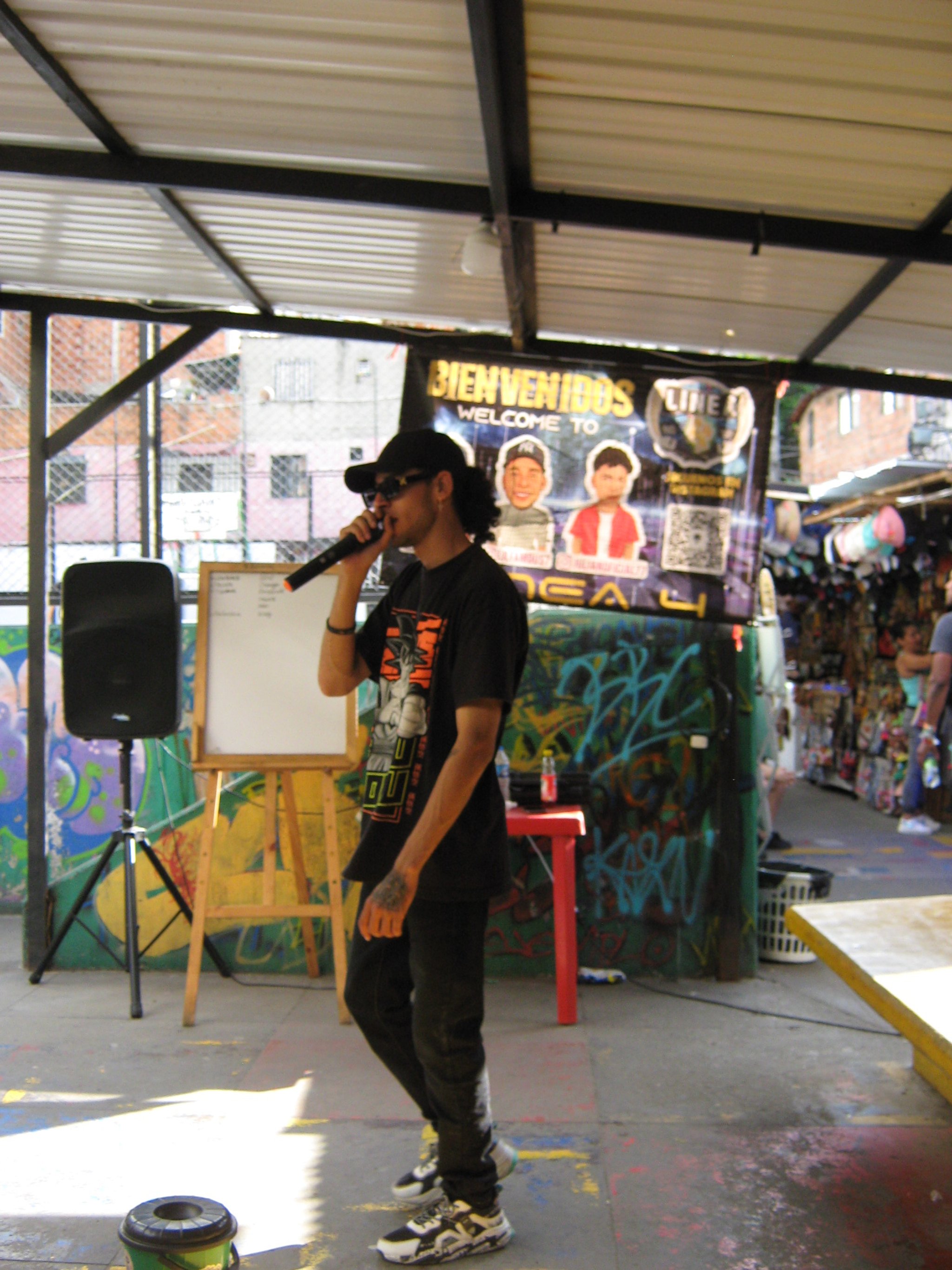A Photodiary of Medellín’s Comuna 13
Met with bursts of vibrant neon hues, overlapping cacophonies of blaring reggaeton and aromas of cooking oil nestled beneath arepas con quesito and chuzos de pollo, my senses ground me in the unique and transformative barrio in the western part of mountainous Medellín. Medellín’s Comuna 13 is a haven of breathtaking political graffiti, insanely talented street dance icons and cheeky freestyle rappers; understandably its every corner explodes to capacity with tourists from around the globe.
I love the Comuna 13, it is one of the places in Medellín that I can always trust for a good night out as a lover of dancehall, reggae and afrobeats. Even though Medellín is a city that normally passes on the use of spices, the Comuna boasts a flavourful cuisine - a trait that can be attributed to the many internal migrants from the coastal regions of the country, especially el Chocó. Though I had visited many times, I decided to fully immerse myself in the tourist experience, so, outside the close by San Javier station, I spoke to one of the many tour guides so I could better understand the history behind this treasure nestled in the outskirts of the city.
Now one of the safest areas, this Comuna is barely recognisable compared to its past as one of the most dangerous places on the continent, fuelled by merciless violence at the hands of the Colombian state and narcotraffickers. A mural located in the middle of the Comuna sports a spray-painted grey hand, with a pair of dice highlighting the date 16/10/2002. “It represents the corrupt hand of the government,” explains my guide, a native of the Comuna. On the 16th of October 2002, Operation Orion, an intervention of 2,000 members of the public services, including military and police, wreaked unspeakable violence on the people of the Comuna 13, a community that was already one of the main victims of the Colombian armed conflict. Four days of arrests, searches, disappearances, murders, and raids ensued, leaving more than 600 direct victims including 71 murdered by paramilitaries and 17 homicides at the hands of public forces, according to the Centro Nacional de Memoria Histórica.
Near the entry to the Comuna, tourists gather around a multi-coloured dancefloor and an impressive street dance performance begins. Of course, there is always at least one double-jointed person that twists their whole body inside out. The dancers began to call members of the audience up to perrear, a sensual dance that is commonplace in one of the reggaeton capitals of the world.
In a bid to gain control of territory it considered to be dictated by guerrilla forces, the Colombian government carried out a series of violent operations around Medellín, leaving civilian populations of already deprived areas left to pick themselves and their community up after violent raids. Decades later, the people of the Comuna 13 continue to demand justice, while the government has denied what happened and nobody has been held to account.[1]
After meandering through a sea of tourists and dozens of stands selling unofficial merch from city natives Feid and Karol G, we sit down to watch the freestyle rap show. This one is not for the faint-hearted; they really come for everyone, from the 80-year-old abuela next to me to the 4-year-old opposite. Being a non-Spanish speaking will not help you either; they have mastered the art of cussing out everyone in Spanglish. Rappers are not the only freestyle musicians you will see along the way, higher up in the Comuna is a band of freestyle trova singers who are equally hilariously shady.
We are led to a sports pitch with both football and basketball nets, and our tour guide begins to tell us that, as part of the grooming practices of various active gangs in the area, children as young as eleven would be forced to shoot others as a means of proving their loyalty to the organisation. This genuinely broke my heart. While recognising that, as a privileged tourist, I could never claim to even begin to grasp this experience, enticing children into the cycle of violence is a global phenomenon. It is not unlike the predatory gangs in my own London, that exploit children from underprivileged socio-economic circumstances, accustoming and desensitising them to violence until they begin to reproduce said violence in a vicious cycle.
Undeniably, the Comuna 13 is an amazing example of community-led, creative, and artistic resistance to difficult social conditions, and should be known on the world stage as such. Known as the largest art gallery in Colombia,[2] the barrio looked to hip-hop dancing and music, as well as street art as a means of self-expression beyond violence. Some of the strongest community leaders and organisers continue to support the community and conduct the painful and necessary memory work in the face of state negligence. The introduction of solar-powered electric escalators has allowed for increased accessibility and mobility through the Comuna, and its tourist economy allows it to sustain itself financially, although that in itself comes with its own struggles around exploitative power dynamics.
If you ever find yourself in Medellín, drop by the Comuna 13 and tip generously. Come and support an amazing and colourful community with some of the loveliest people I have ever had the privilege of meeting.
All images belong to the author, unless otherwise stated.









